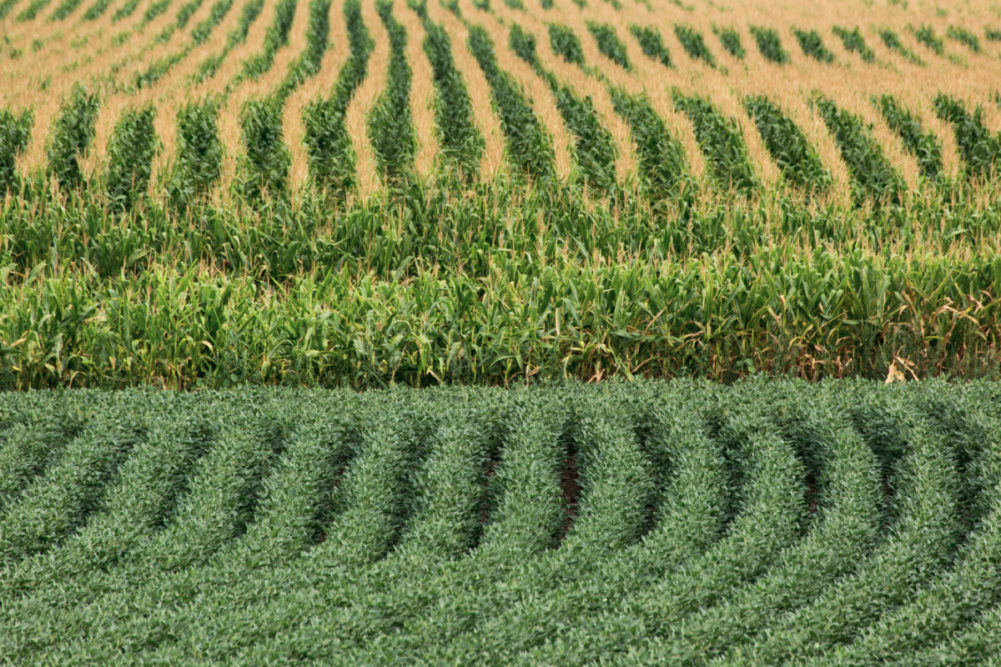CHESTERFIELD, MISSOURI, US — Area planted for soybeans in the United States could surpass current No. 1 corn to meet soybean oil demand for renewable diesel, with the gradual expansion of crushing plants driving a need for an additional 600 million bushels within a few years, according to a new RaboResearch report.
“The Mighty US Crop Markets Through 2030” notes ongoing growth in domestic grain and oilseeds demand will support prices while the US share of the global export market continues to decline. Yields will need to continue to improve as the number of acres planted seems to have reached a plateau that the three major crops – corn, soybeans and wheat – have been unable to surpass.
Current agricultural economic conditions favor corn over soybeans, and the report’s baseline estimates for 2023-24 show 90.4 million acres for corn versus 89 million acres for soybeans. Wheat is expected to reach 49.3 million acres. The report said the combined crops are struggling to break past the historical record of 230 million acres while corn plus soybeans reflects a chronic struggle to top 180 million acres.
“The three crops’ failure to surpass this acreage threshold is concerning, especially at a time of historically higher commodity prices,” the report said. “With planted area growth, the only growth component left is yields. Acres appear to be maxed out under current conditions, meaning the battle for acres will intensify, particularly if and when new demand emerges.”
Demand for grains and oilseeds has shown resilience in the face of market challenges ranging from supply chain disruption to the pandemic and macroeconomic volatility. Domestic demand has been solid while export markets have been more challenging for US crops. This is the result of ever-increasing crops in South America, large Russian wheat production and high US prices compared to export competitors.
Over the past three years, US crops have seen a gradual reduction in stocks as demand grew faster than production. The declining stocks-to-use ratio has supported a rise in prices.
“Moving forward, however, the expansion of soybean crush capacity will be key to sustaining crop prices,” the report said. “One of the main factors likely to structurally change and direct the sector, particularly from 2024 onward, is new US soybean crushing capacity to meet future soybean oil demand for renewable diesel.”
While soybean crush capacity has been growing in earnest since 2021, most of the expansion will take place in the 2023-24 to 2026-27 crop years, about 620 million bushels. More soybean acres needed to fulfill demand will put pressure on other crops, given the area constraints, RaboResearch said. The report expects soybeans to potentially overtake corn in planted acres by 2025-26, reaching 93 million acres in some years while taking away acres from other crops.
The three major crops combined will continue to show an increase in domestic demand compared to exports. The decline in exports is expected to be mainly driven by an increase in domestic soybean demand as new crush capacity comes online, the report noted. The outlook calls for an increase in domestic use of corn and soybeans while wheat remains relatively flat. Exports as a total share of demand will fall.
“As demand for grains and oilseeds continues to grow domestically, prices will remain supported over the outlook period, remaining higher than the 10-year average but below the 2022-23 peak,” the report said. “Global markets are likely to buy less from the US due to high domestic demand and the resulting high domestic prices, which will likely be uncompetitive in the global export markets.”






